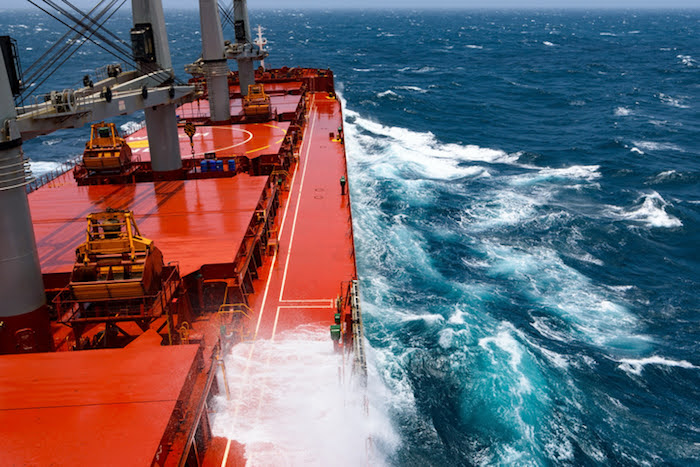While most containerships are making detours around the conflict-affected Red Sea, experts say container freight rates, which had initially soared, are showing signs of easing.
“We believe that the worst is behind us,” said Philip Damas, managing director at British maritime research consultancy Drewry. “Now we are into a second phase where it will be easier for exporters to manage and organize, and also where the spot rates are going to come down significantly after the early phase.”
Damas told Nikkei Asia that exporters and shipping companies are gradually adapting to longer transit times, planning and preparing accordingly.
Drewry’s World Container Index on Feb. 8 fell for the second week in a row to $3,786 per 40-foot container, losing 1% from the previous week. A day later, the Shanghai Containerized Freight Index showed a 2.3% decrease, to 2,166 points.
The Red Sea and Suez Canal are vital for transporting goods between Asia and Europe, but risks have increased since November when Yemen-based Houthi militants started attacking containerships in the Red Sea.
Since mid-December, about 90% of the containerships that usually sail through the sea have been steering clear of it, according to Clarksons, a shipping services and data provider.
Drewry’s index, which indicates container freight spot rates for major global trade routes, on Jan. 25 increased to $3,964, nearly triple the rate of two months earlier. While around 80% of shipping contracts use long-term rates rather than spot rates, these contracts can be affected over time.
According to Damas, the spot rate hike was caused by an imbalance in supply and demand. One cause of the imbalance was a temporary shortage of container vessels as many ships suddenly found themselves detouring around the Cape of Good Hope, causing delays of up to two weeks.
Another factor played into the temporary imbalance: a rush to manufacture and transport products before Chinese factories closed over the Lunar New Year holidays.
Additional costs for the detour itself may not be that significant. “The cost increase is much lower than the 200% increase in spot rates,” Damas said. He estimates that the additional cost of going around the cape ranges from 3% to 20%, depending on sailing speed. Additional costs are not directly proportionate to the distance, as the ship operator does not have to pay the Suez Canal toll.
“Container shortages are somewhat calming, and freight rates from Asia to Europe may have peaked out,” Takuma Matsuda, a professor of maritime economics at Takushoku University in Tokyo, told Nikkei Asia.
Demand for container shipping was relatively low before the Red Sea crisis due partly to the sluggish global economy, a trend Matsuda expects to continue for a while.
Damas and Matsuda also note that there has been abundant containership capacity of late. Around 350 new containerships were delivered to the market last year, and an all-time high of 400 ships are expected to be added this year. “Shipbuilding takes more than a year and a half,” Matsuda said. “Many orders were placed during the pandemic when supply could not keep up with the surge in demand.”
With all the added capacity, Damas sees spot rates falling at least 30% in the next three months.
Vincent Clerc, CEO of Denmark’s A.P. Moller-Maersk, appears to concur.
“While the Red Sea crisis has caused immediate capacity constraints and a temporary increase in rates,” he told investors on Feb. 8, “eventually the oversupply in shipping capacity will lead to price pressure and impact our results.”
As long as ships are forced to detour around the Red Sea they will incur some additional costs. Takashi Yamamoto, executive officer at Nippon Yusen, Japan’s largest shipping company, at an earnings call on Feb. 5 said, “We will discuss cost sharing [for the detour] with shippers individually.”
French shipping group CMA CGM, one of the few companies that had been sailing through the Red Sea, will no longer do so. “All services initially routed via the Red Sea passage will now follow the Cape of Good Hope routing,” the company said in a statement.
Source: Hellenic Shipping News






